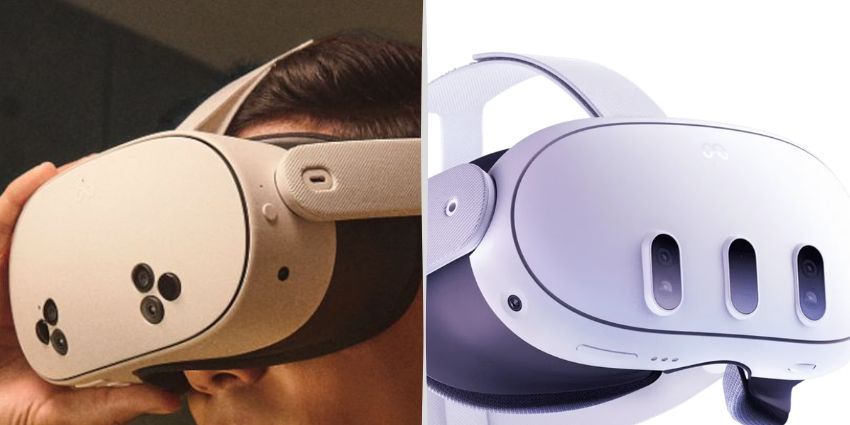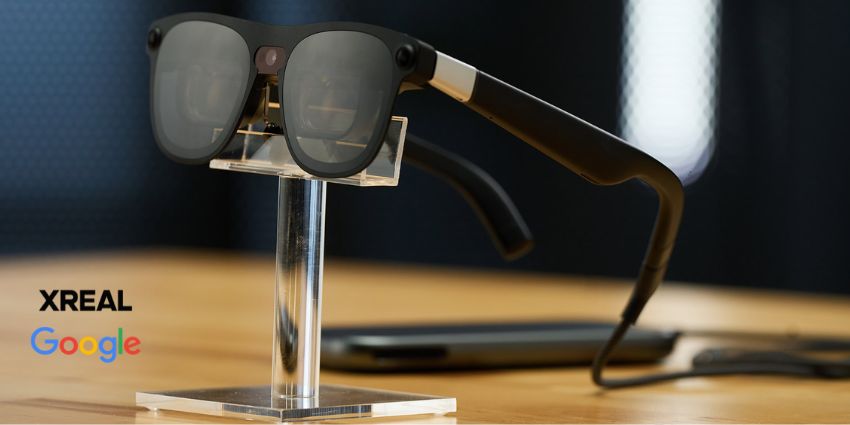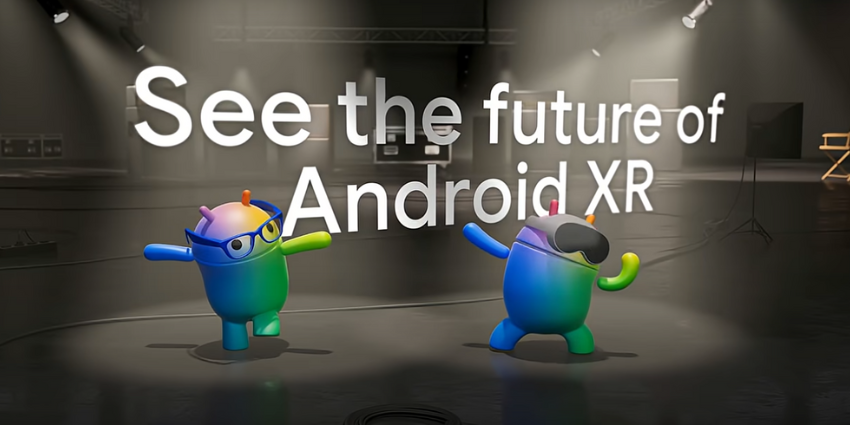Meta Quest 3S vs Meta Quest 3: how do you make the right choice when investing in mixed reality headsets this year? The Meta Quest 3S isn’t a “new headset” designed to add new features and functionality to Meta’s leading mixed-reality device.
In fact, it’s basically the opposite – a pared-down (simplified) version of the Meta Quest 3 intended to ensure budget-conscious consumers can enjoy cutting-edge extended reality experiences.
But is the saving of around $200 for a base-model Quest 3S, compared to the Quest 3, worth it? How much will you need to compromise on to save a little extra money? In this side-by-side comparison, we’ll show you exactly what you’ll miss out on if you choose a Meta Quest 3S over the Quest 3, to help you decide if a frugal purchase is worthwhile.
Meta Quest 3S vs Meta Quest 3: Overview
Meta’s budget-conscious version of the popular Quest 3 headset is surprisingly close in performance and functionality to its big brother. Before the new headset was announced at Connect 2024, we expected Meta to take many extra steps to cut costs.
We weren’t alone in these assumptions, either. Many technology analysts suggested Meta might reduce processing power with a cheaper chipset or sell headset controllers separately to reduce costs. However, the Quest 3S has the same Snapdragon processor as the Quest 3 and still comes with a set of Touch Plus controllers.
It also still supports full-color passthrough and hand tracking, delivering a major upgrade over the previous Quest 2. Of course, there are a few differences in the spec lists for the Meta Quest 3S and the Meta Quest 3:
| Feature | Meta Quest 3S | Meta Quest 3 |
| Weight | 514g | 515g |
| Display | One LCD Display | 2 LCD displays |
| Lenses | Fresnel | Pancake |
| Resolution: | 1832 x 1920 pixels per eye | 2064 x 2208 pixels per eye |
| Refresh rate | 120Hz | 72Hz, 80Hz, 90Hz, 120Hz |
| FOV | 90 degrees vertical, 96 degrees horizontal | 96 degrees vertical, 110 degrees horizontal |
| RAM | 8GB | 8GB |
| Storage | 128GB or 256GB | 512GB |
| Battery life | 2.5-5 hours | 2-3 hours |
The Pricing: How Much Cheaper is the Quest 3S?
We’ll start this comparison with the main factor that makes the Meta Quest 3S such a compelling alternative to the Quest 3: the price. The Quest 3S is available in two versions: the 128GB option for $299.99 or the 256GB version for around $399.99.
The Quest 3 previously also had a 128GB option, but that’s been discontinued now. However, Meta has also reduced the cost of its Quest 3 (512GB) version from $649.99 to $499.99. So, you’ll save about $200 if you compare the base models.
Spending an extra $200 on the Quest 3 doesn’t just give you more storage. You also get a slightly slimmer headset, better displays, and enhanced resolution. Still, you do get the same internal processing power from both headsets.
Design, Comfort, and Ergonomics
Let’s start with the differences in the design of these two systems. At a glance, the devices look pretty similar. They share identical controllers, the same elastic strap to keep the headset secured to your head (unless you upgrade to an Elite strap for the Quest 3), and the same overall aesthetic. The headsets also weigh almost exactly the same.
Although the Quest 3S is one gram lighter than the Quest 3, it’s much bulkier. Meta says this headset is only about 20% slimmer than the Quest 2. The Quest 3 is 40% slimmer than the Quest 2, making it much smaller than the Quest 3S.
Additionally, the Quest 3S positions the headset’s weight further away from your face, so you might experience a little more discomfort during long use periods. Speaking of comfort, both models have a fabric facial interface and decent padding. They also both support prescription lenses if you need them.
However, the headsets do handle IPD adjustments differently. The Quest 3 doesn’t offer automatic IPD adjustment with eye tracking. However, it allows fractional adjustments between 53mm and 75mm. The Quest 3S gives you three positions to choose from: 58mm, 63mm, and 68mm. That means you might experience more eye strain and blurriness with the Quest 3S.
From a design perspective, the Quest 3S has an additional action button that the Quest 3 doesn’t. This button allows you to switch between mixed and virtual reality views. With the Quest 3, you simply need to tap on your headset to achieve the same results, so the loss of this button isn’t really a downside.
Meta Quest 3S vs Meta Quest 3: Lenses and Visuals
The two devices’ visuals are very different. The Meta Quest 3S features Fresnel lenses, similar to the Quest 2. Alternatively, the Quest 3 has pancake lenses, which significantly upgrade sharpness and clarity.
Pancake lenses make the sides of the images you see in XR a lot cleaner and deliver a much wider “sweet spot” for visual fidelity. The resolution in the Quest 3S is a lot lower, too. While the Quest 3 has 4.5 million pixels to work with, the Quest 3S only has 3.5 million.
You also get a resolution of around 1832 x 1920 per eye on the 3S, compared to the 2064 x 2208 pixels per eye of the Quest 3. Ultimately, the display quality isn’t bad – but it’s closer to the Quest 2 than the Quest 3. To make matters worse, the “pixels per degree” are also lower in the Quest 3S. This determines how sharp images appear in VR.
The Quest 3 delivers 25ppd, while the Quest 3S offers 20ppd. In other words, if you’re used to the visual quality of the Quest 3, and even advanced devices such as the Apple Vision Pro, you’re going to be disappointed by the Quest 3S.
Even the field of view on the Quest 3S is narrower, cutting your horizontal FOV by around 14 degrees. It might not seem like a huge downgrade, but it does mean you’ll end up with more of a “porthole” effect with the Quest 3S,
Performance, Software, and Battery Life
From a performance perspective, the Meta Quest 3S should offer functionality similar to the Quest 3. It uses the same powerful XR2 Gen 2 Snapdragon chipset, so there shouldn’t be any major issues with lag or certain applications working poorly.
In fact, using a powerful chipset with a slightly lower native resolution could mean that certain demanding applications work a little more smoothly on the Quest 3S. Plus, you’ll still have access to the full Horizon store of apps and games on the Quest 3S, so there’s no real limit from a software perspective. However, how certain apps work might differ slightly.
For instance, there’s no depth sensor in the Quest 3S. In the Quest 3, this additional feature does mean it’s easier for the device to map out your room for exceptional accuracy in mixed reality. Still, you will get full-color passthrough on both devices.
One area where the Quest 3S might actually have a slight edge over the Quest 3, from a performance perspective, is in battery capacity. The Meta Quest 3 is rated for an average battery life of up to 2.2 hours on a full charge. The Quest 3S is rated for a runtime of up to 2.5 hours.
That might seem unusual, since the Quest 3 actually has a higher battery capacity. However, the high-resolution displays on the Quest 3 will consume power a lot faster, so you run out of energy quicker than you would with the Quest 3S.
Which Meta Quest is Best? Verdict
So, should you save your money and buy the Quest 3S this year? Or is it worth spending a little extra to get the extra benefits of the original device? Ultimately, it all depends on what matters most to your extended reality experiences.
Both devices offer a similar level of functionality and performance. However, the Meta Quest 3 will deliver better visual experiences and potentially more comfort. Basically, with the Quest 3S, you get an upgraded version of the Quest 2 with color passthrough cameras, a better processor, and a stronger set of controllers.
However, you don’t get the full high-end experience you’d get from the Quest 3, or the extra storage potential. The Quest 3S could be a great option for people on a tighter budget who aren’t sure how often they will be using XR regularly.
However, if you will be using your headset frequently, and want a consistently solid mid-range experience (without upgrading to something like the Apple Vision Pro), the Quest 3 is worth the extra cost.







